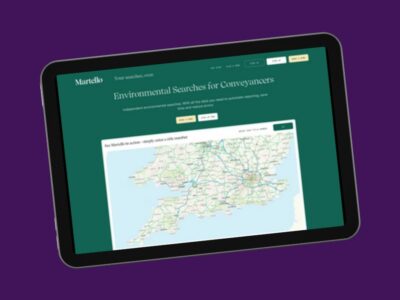What is Infiltration Testing?
In line with the drainage hierarchy, Sustainable Urban Drainage Systems (SuDS) should first consider the discharge of surface water runoff from impermeable areas to ground. This is also known as infiltration testing or percolation to ground. GeoSmart’s SuDSmart Plus report is a desktop based assessment of the Site conditions, which can provide a preliminary opinion on whether infiltration to ground is likely to be feasible at the Site.
Many developers and architects include a soakaway as part of the surface water drainage system, however, if infiltration to ground is recommended in the GeoSmart SuDSmart Plus report, it is recommended to undertake infiltration testing. This needs to be done before plans are finalised as the results could significantly impact the size and/or design of the drainage system. If infiltration to ground is not considered feasible within the SuDSmart Plus report, then infiltration testing is unlikely to be requested by the council; unless they wish for it to be proved infiltration is not feasible on Site.
The calculated soil infiltration rate is used to determine the feasibility of soakaway drainage, the design storage volume and the number of infiltration SuDS features required.
There are many types of soils across the country which absorb (infiltrate) water at different rates depending on their permeability and porosity. The speed at which water enters the soil is known as an infiltration rate and a test can be done to obtain this rate.
Infiltration testing should be undertaken in the area where focused infiltration features such as soakaways are proposed.
It is important to remember that other seasonal factors such as groundwater levels and soil moisture content may affect infiltration testing results. Infiltration testing should be assumed under a worst case basis.
Most planning conditions recommend that infiltration testing should be undertaken in accordance with BRE Digest 365. There are several key stages when undertaking an infiltration test:
- A soakage trial pit to the same depth as the anticipated SuDS feature.
- The soakage trial pit should be 1 m to 3 m long and 0.3 m to 1 m wide. It should have vertical sides trimmed square and, if necessary, for stability, should be filled with granular material. When granular fill is used, a full-height, perforated, vertical observation tube should be positioned in the soakage trial pit so that water levels can be monitored with a dip tape.
- It should be possible to construct a suitably-dimensioned pit with a backhoe loader or mini-excavator. For safety reasons do not enter the soakage trial pit.
- A lot of water will be used to determine the soil infiltration rate so a water bowser may be needed. The inflow should be rapid so that the soakage trial pit can be filled to its maximum effective storage depth in a short time. Take care that the inflow does not cause the walls of the soakage trial pit to collapse.
- Fill the soakage trial pit and allow it to drain three times to near empty. Each time record the water level and time from filling, at intervals sufficiently close to clearly define water level versus time. The filling of the soakage trial pit should be on the same or consecutive days.
- Calculate the soil infiltration rate from the time taken for the water level to fall from 75% to 25% effective storage depth in the soakage trial pit.
An example of a good infiltration rate, which would sufficiently discharge water to ground and where focused infiltration features would be suitable would be x 10 -4 or -5.
A poor infiltration rate would be x 10 -6. This may still support infiltration to ground via focused infiltration, if this was the only discharge method feasible, but would need to be larger in size to accommodate for a slower emptying time.
An example of an infiltration rate where discharge to ground would not be feasible would be x 10 -7. In this case, other discharge options with the drainage hierarchy would have to be explored.
If you wish to discuss infiltration testing or other drainage related matters on your Site, please get in contact with us. Reach us by calling 01743 581 415, or send an email to enquiries@geosmartinfo.co.uk



